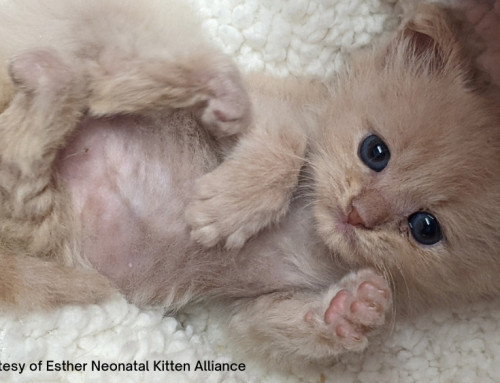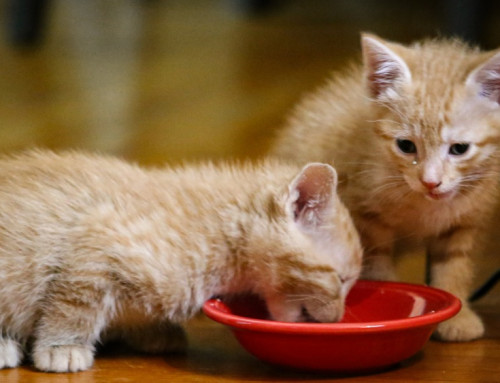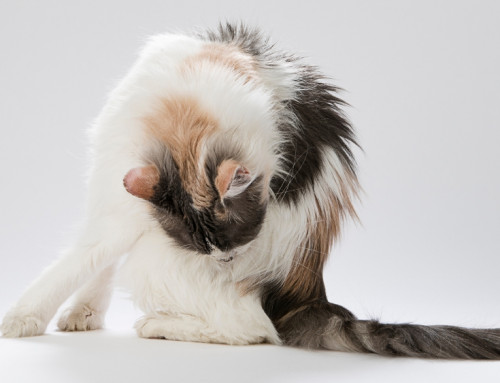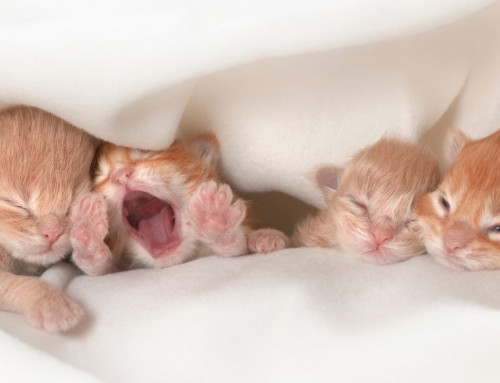Share this resource or email it to a friend!
This is part 2 of this 3-part series on FeLV. Part 1 covers transmission, and part 3 covers treatment and prevention.
During the early stages of infection, cats may not exhibit any disease symptoms. Over weeks, months or even years, infected cats’ health may progressively deteriorate or they may experience cycles of illness and relative health. Prompt veterinary attention is required for any disease symptoms, which may include:
- Loss of appetite
- Progressive weight loss
- Persistent diarrhea
- Persistent fever
- Poor coat condition
- Infections of the skin, urinary bladder and upper respiratory tract
- Enlarged lymph nodes
- Eye conditions
- Pale gums and other mucous membranes
- Gingivitis (inflammation of the gums) and stomatitis (inflammation of the mucous membrane of the mouth)
- Behavior changes, seizures and other neurological disorders
- Abortion of kittens or other reproductive failures
FeLV is diagnosed by detecting FeLV P27, a protein component of the virus, or proviral DNA. Cats with negative in-house test results may still be infected and later show symptoms of disease; cats can also test transiently positive and later test negative. Maternally acquired immunity and FeLV vaccination will not cause false positive test results. The 3 common diagnostic tests are:
- The ELISA. This enzyme-linked immunosorbent assay test is usually performed in-house as a screening tool in a veterinarian’s office; it detects free FeLV particles commonly found in the bloodstream during the early and late stages of infection.
- The IFA. This immunofluorescent antibody assay test is usually sent to a diagnostic laboratory after a positive ELISA test to confirm FeLV infection; it detects the presence of virus particles within white blood cells, usually an indication of a more advanced infection. Cats with positive IFA tests remain infected for life.
- The quantitative This polymerase chain reaction test may be recommended after a positive screening test or to screen blood donor cats or cats used for breeding. It’s a DNA test that identifies if a positive-tested cat is likely to be a long-term survivor or develop disease and mortality early.
There is a significant difference in accuracy between types of tests, interpretation of results is complex, and testing all shelter cats is expensive in terms of test costs, length of stay for cats who test positive and staff time to care for those cats. In addition, false positive FeLV in-house test results increase when testing all healthy cats. Given these realities, it makes more sense to reserve limited resources and only test cats with symptoms of FeLV.
The Association of Shelter Veterinarians recommends that cats eligible for adoption or relocation be tested. When not practical, cats who are sick, have bite wounds or come from high-risk (such as hoarding) situations should be prioritized for testing. Private practice veterinarians more commonly perform FeLV tests when clients bring in their newly adopted cat or kitten.
Fortunately, as you’ll read in part 3 of this series, the future of FeLV-positive cats is looking up.










